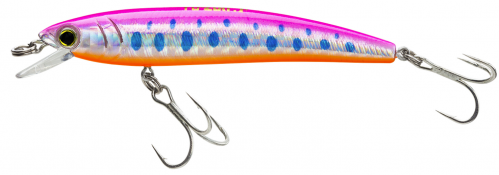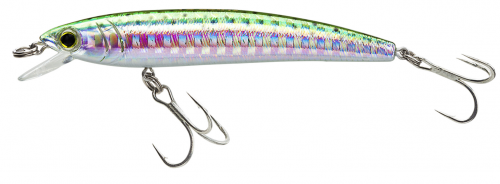bass fishing
Multi-Species Fishing Trips: A Late Summer Hard Bait Approach
Many fish species can be found throughout the water column during the late summer period. Panfish and predator species alike can be caught at or near the surface of the water column, hunkered down in thick vegetation or cruising weedlines adjacent to steep drops, or suspended over deep basins during this time of year. Having a variety of hardbaits that cover each level of the water column during late summer can improve the odds of catching several fish species in one fishing trip.
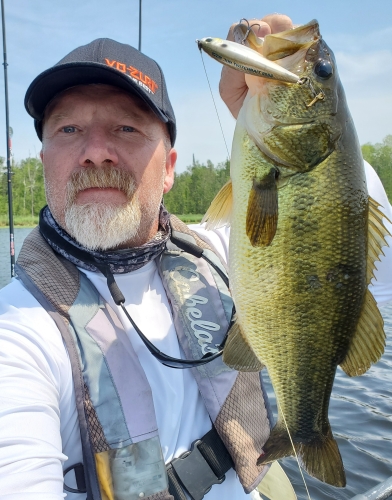
Surface
With so much bug life and baitfish congregating at or near the surface of the water column, late summer can be a great time of year to chase largemouth and smallmouth bass and northern pike using poppers. The Yo-Zuri 3DR-X Popper is a smaller profile lure at 2 5/8” and 1/4 oz. that works well during lowlight periods of the day, when the wind is under 5 miles per hour, and when fish are extremely finicky. The Bone or Ghost Prism Frog are solid patterns when fished within open pockets formed by lily pads and when chasing fish hunkered down in weeds during the heat of the day. Yo-Zuri 20 lb test SuperBraid is a top line choice when using the 3DR-X Poppers in and around weeds as it is strong enough to hold large bass or pike when they dive for thick cover as is often the case after a strike.
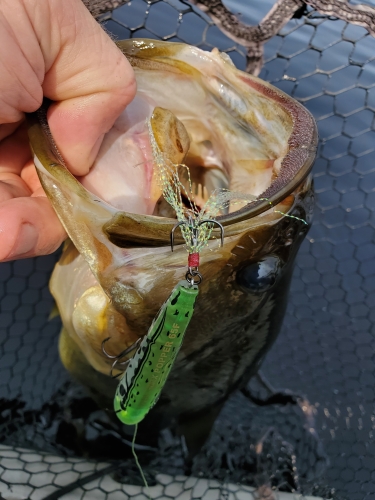
Mid-Depth
While many walleyes will shift their focus to deep humps, rock piles, and deep flats during late summer, there are inevitably going to be fish that frequent structure in less than 12’ of water as well. Larger walleyes will hunt in and around large cabbage patches where small perch, bluegills, and other minnows seek cover. At 4 3/8” and 1/2 oz., the 3DB Jerkbait 110 Deep is a hardbait that stands out among smaller forage that gets the attention of large walleyes waiting for an easy meal to pass in front of them. The Bold Table Rock Shad is arguably one of the most versatile patterns when fishing for walleyes in weeds as it can be effectively fished in clear or tannic-stained water. Changing up the cadence used from fast twitches to simply pulling the Jerkbait forward a few inches at a time allows the Yo-Zuri “Wave Motion Technology” to maximize vibrations that walleyes cannot resist.
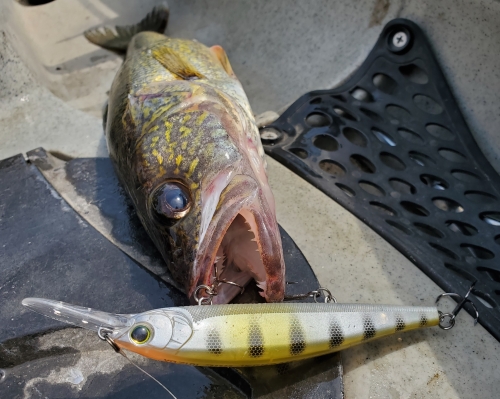
Deepwater
Although bluegills and crappies can be found in weeds and wood in late summer, this can also be a great time of year to pursue large schools of fish that suspend over deep water chasing smaller minnows and invertebrates. It is common to find marauding packs of panfish suspended 15-20’ down in 35’+ of water during this time of year. The Rattl’N Vibe, at 2 1/8” and 3/8 oz., is a large enough profile lure that sinks to suspended panfish quickly to maximize water covered effectively, but it is still small enough that big panfish will regularly eat it. Tying Yo-Zuri 6 lb test Hybrid line to the Vibe and then jigging, drifting, and trolling are all great options when pursuing suspended panfish. The Luminescent is a glow-based pattern that works regardless of water clarity and is an excellent choice early and late in the day when light is diminished.
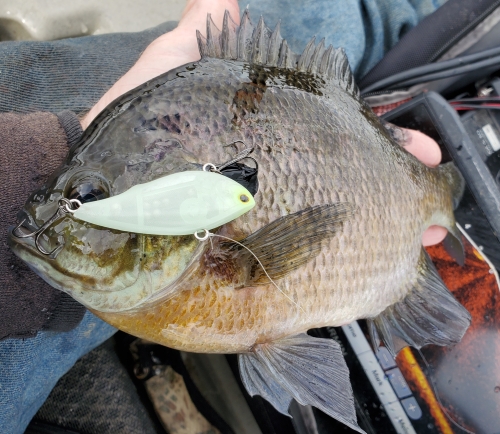
The late summer period can be a great time to chase multiple species of fish in the same trip. Coupling Yo-Zuri lines with the 3DR-X Popper, 3DB Jerkbait 110 Deep, and Rattl’N Vibe can give you the opportunity to maximize results during your next multi-species trip on the water.
Tight lines and be safe!
- Mark Maule
Throw The Knuckle For A Great Change-Up- by Mark Maule
With August rapidly approaching, many larger northern pike have retreated to deep water weeds, deeper rock piles, or roam the basin in some cases chasing schools of baitfish. During this time, many anglers put away their northern pike gear because it can be more challenging to catch bigger fish than it is during the spring and fall seasons. However, if you can find the fish, they can be caught. One of my favorite lures to fish large northern pike during late July and throughout August is the Yo-Zuri 3DB Knuckle Bait.
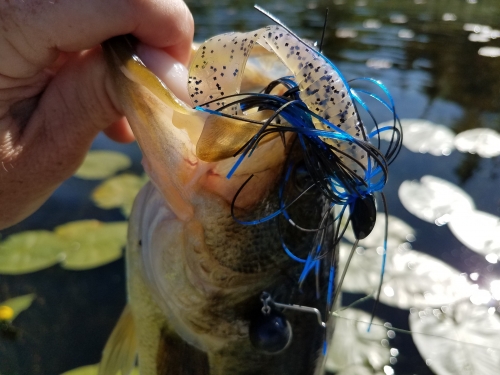
At 1/4, 1/2, and 5/8 oz. the Yo-Zuri 3DB Knuckle Bait can effectively be fished throughout the water column. The 1/4 oz. Knuckle is a perfect choice when fishing in water up to about 10’ above downed wood, right at the edge of weeds that drop into deeper water, or off of long points. The 1/2 oz. and 5/8 oz. Knuckle Baits are a great choice when fishing in water from 10-20’ deep while working the edge of weedlines and sharp drops or humps. The 5/8 oz. Knuckle Bait can also be a great option when pursuing large fish in the 15-25’ range over basins when they are chasing schools of baitfish.

Two of my favorite colors regardless of how deep I am fishing are the Golden Shiner and Tennessee Shad. The Golden Shiner 3DB Knuckle Bait is perfect for tannic or dirty water and the Tennessee Shad is an excellent choice for clear water conditions where the sun is high in the sky. With each pattern, it is recommended to use some kind of trailer. Normally, I go with a 4” or 5” plastic grub that emulates baitfish that are in the system. So, for example, when fishing the Golden Shiner Knuckle Bait, I might choose a grub that has some chartreuse and orange flecks in it because it mimics a bluegill that northern pike will be feeding on in weeds. When using the Tennessee Shad Knuckle Bait, I might go with a pearl or white grub to try for basin fish because these colors look like tullibees that northern pike might be chasing.
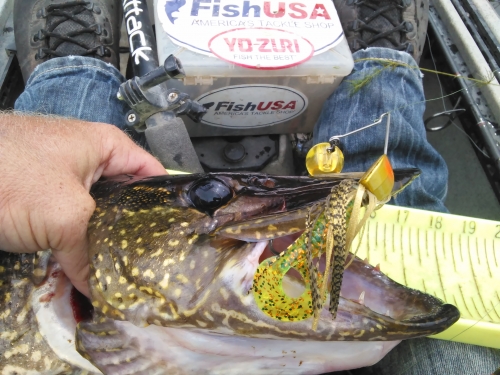
Fishing for large northern pike during summer can be daunting at times, but they can still be caught with relative frequency. Throwing the Knuckle as a change-up to patterns used in spring and fall can be a terrific way to keep you on the numbers and good-sized fish.
Post Spawn Big Bass “Wake” Up!- Mark Maule
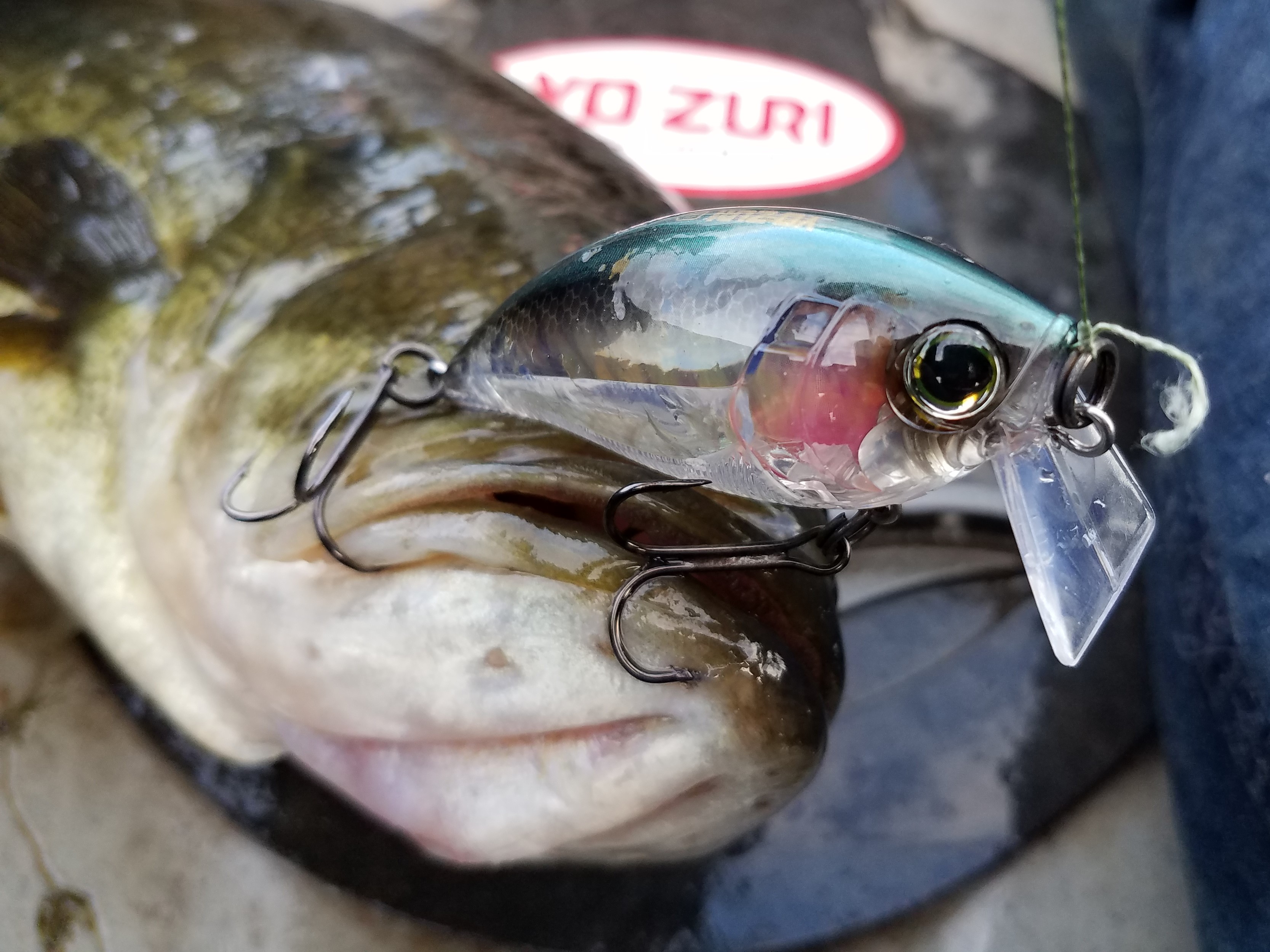 Have you ever had one of those mornings where you just don’t want to wake up or get out of bed? Of course! We have all had that experience at some time. During the immediate post spawn period, it can seem like the big bass in a lake have one of those mornings for an entire week. However, even when they are lethargic and not feeding heavily as can be the case in the immediate post spawn period, there are still some opportunities to “Wake” them up and get them to bite.
Have you ever had one of those mornings where you just don’t want to wake up or get out of bed? Of course! We have all had that experience at some time. During the immediate post spawn period, it can seem like the big bass in a lake have one of those mornings for an entire week. However, even when they are lethargic and not feeding heavily as can be the case in the immediate post spawn period, there are still some opportunities to “Wake” them up and get them to bite.
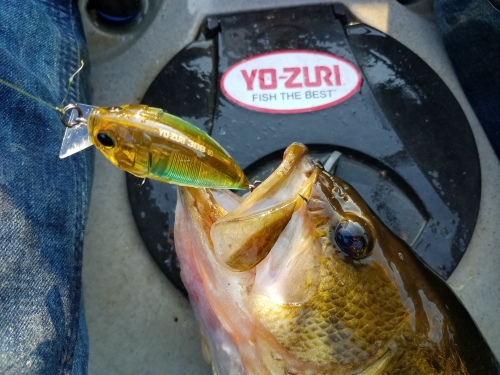
One of my favorite lures during this transitional phase is the Yo-Zuri 3DB Wake Bait. At 2.75”, this lure has a solid tight wobbling motion. Like other Yo-Zuri products, the 3DB Wake Bait has a rattle that can draw fish in from a long way off. The Yo-Zuri 3DB Wake Bait can be fished right beneath the surface leaving disrupted water behind it as it is reeled in, or it can be fished effectively up to about 1.5’ below the top of the water.
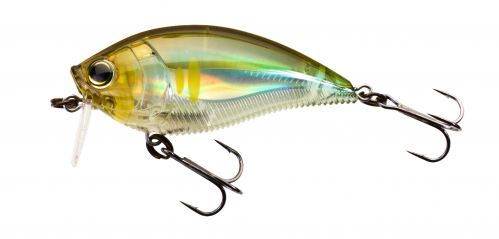
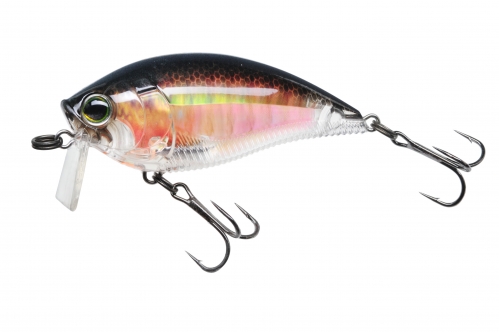
Using the 3DB Wake Bait during the post spawn can be especially effective early in the morning or late in the day when the sun is lower. Add some wind up to about 5 mph hour, and this lure can be cranked for bass on any given lake. The Prism Ayu is one of my favorite colors during the immediate post spawn for bass because it emulates the baitfish that the fish are feeding on or will be feeding on soon and elicits reaction strikes. Prism Ayu is a great pattern choice to use in clear water especially as bass will come to the surface from 15’ down to engulf this lure as the cadence is changed with every crank of the reel handle. Generally speaking, I start in 3-6’ of water when using the 3DB Wake Bait, and then work my way out deeper if necessary. Another alternative in cloudy conditions during the Bluegill spawn is the same size of Yo-Zuri Wakebait in the 3DR series is the Real Bluegill.
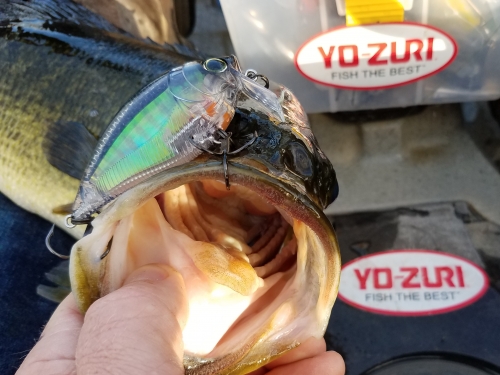
So if you are facing some cranky bass right after the post spawn that don’t seem to want to move, much less eat a bait, “Wake” them up with the Yo-Zuri 3B Wake Bait.
Yo-Zuri Prostaff angler Brandon Cobb Captures his first W
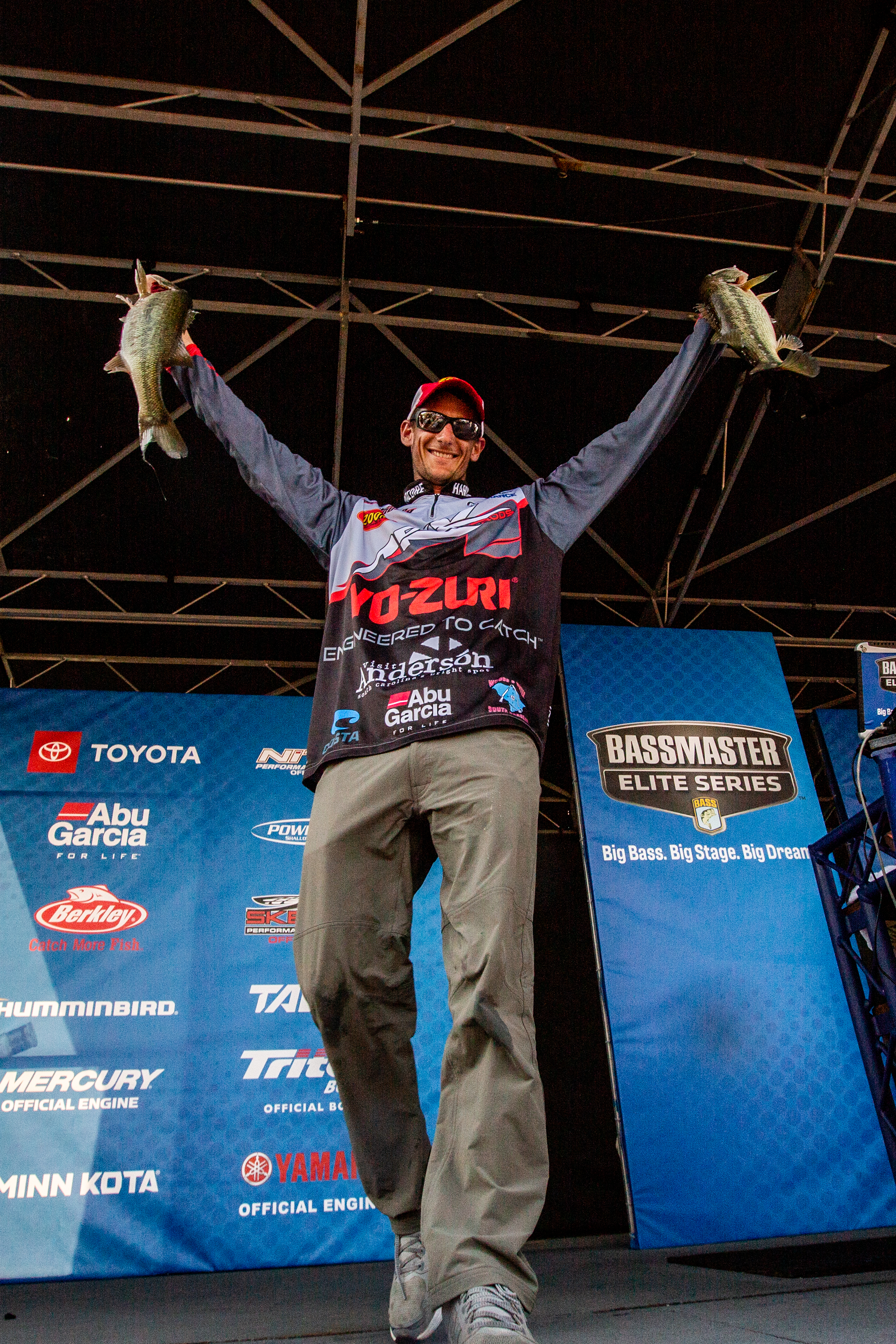 Fishing as a professional bass fisherman comes with a lot at stake. It can be financially trying, emotionally exhausting, physically demanding, but can all pay off when the plan comes together. Every angler out there has one goal in mind; to WIN! But what if you are in front of your hometown crowd? The people that saw you grow-up, the friends you’ve known your whole life, your wife, your parents and grandparents, all your family, what if you were the angler everyone had their eye on through-out the week? Does the stakes of winning get higher? Is there more added stress? Do you expect more from yourself? Well that was exactly the cards dealt to Yo-Zuri Prostaff angler Brandon Cobb last week on Lake Hartwell for the Bassmaster Elites Series event in South Carolina.
Fishing as a professional bass fisherman comes with a lot at stake. It can be financially trying, emotionally exhausting, physically demanding, but can all pay off when the plan comes together. Every angler out there has one goal in mind; to WIN! But what if you are in front of your hometown crowd? The people that saw you grow-up, the friends you’ve known your whole life, your wife, your parents and grandparents, all your family, what if you were the angler everyone had their eye on through-out the week? Does the stakes of winning get higher? Is there more added stress? Do you expect more from yourself? Well that was exactly the cards dealt to Yo-Zuri Prostaff angler Brandon Cobb last week on Lake Hartwell for the Bassmaster Elites Series event in South Carolina.
How did Brandon do? He never even flinched and got the job done; winning his first Bassmaster Elite Series event in his career and taking home a $100,000 payday.
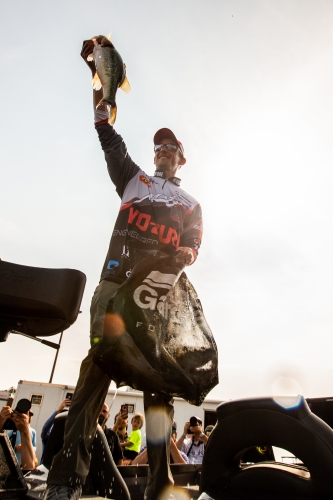
Brandon grew up in South Carolina and has fished Lake Hartwell his whole life, so knowing the lake was no problem. Making sure he didn’t let history interfere with his ability to fish clean and strong to capture the win; that was the difficult task. The Yo-Zuri pro knew he needed to stick to one area of the lake that was notorious for big bedding fish. He stuck to his plan and stayed calm.
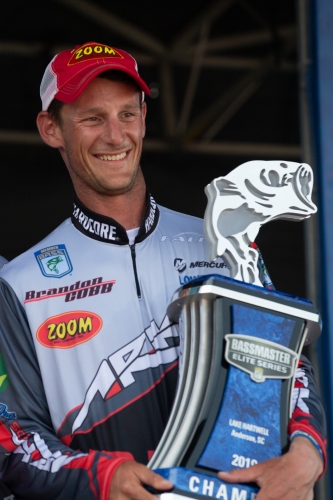
Brandon is a well-known angler that prefers to burn the bank and cover as much water as he could throwing moving baits. But, when the springtime hits and water is clear; the best way to catch them is with a spinning rod. Brandon threw a wacky worm throughout the tournament but still managed to cover as much fishable water as he could, even at times revisiting areas through-out the tournament days as fish continued to move up in his primary areas.
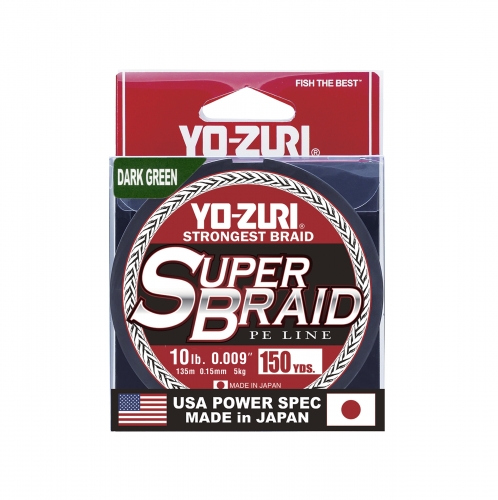
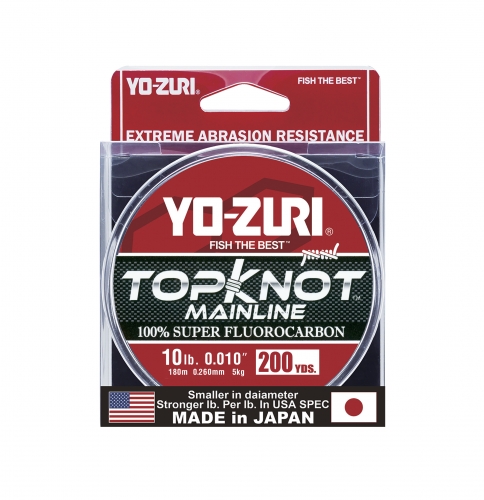
Brandon’s arsenal of attack was a 6’10 medium action spinning rod, 2500 size spinning reel, Yo-Zuri 10lb SuperBraid with a 10lb Yo-Zuri Topknot Fluorocarbon leader. Brandon was using this set up to throw a wacky worm to make long casts and catch cruising largemouth in bedding areas. Occasionally he would slow down and throw a shaky head for fish that were locked onto a bed, but most of the fish he weighed in were cruising shallow.
FLW Tour Lake Toho Top-20 Finish Recap- by Mike Surman
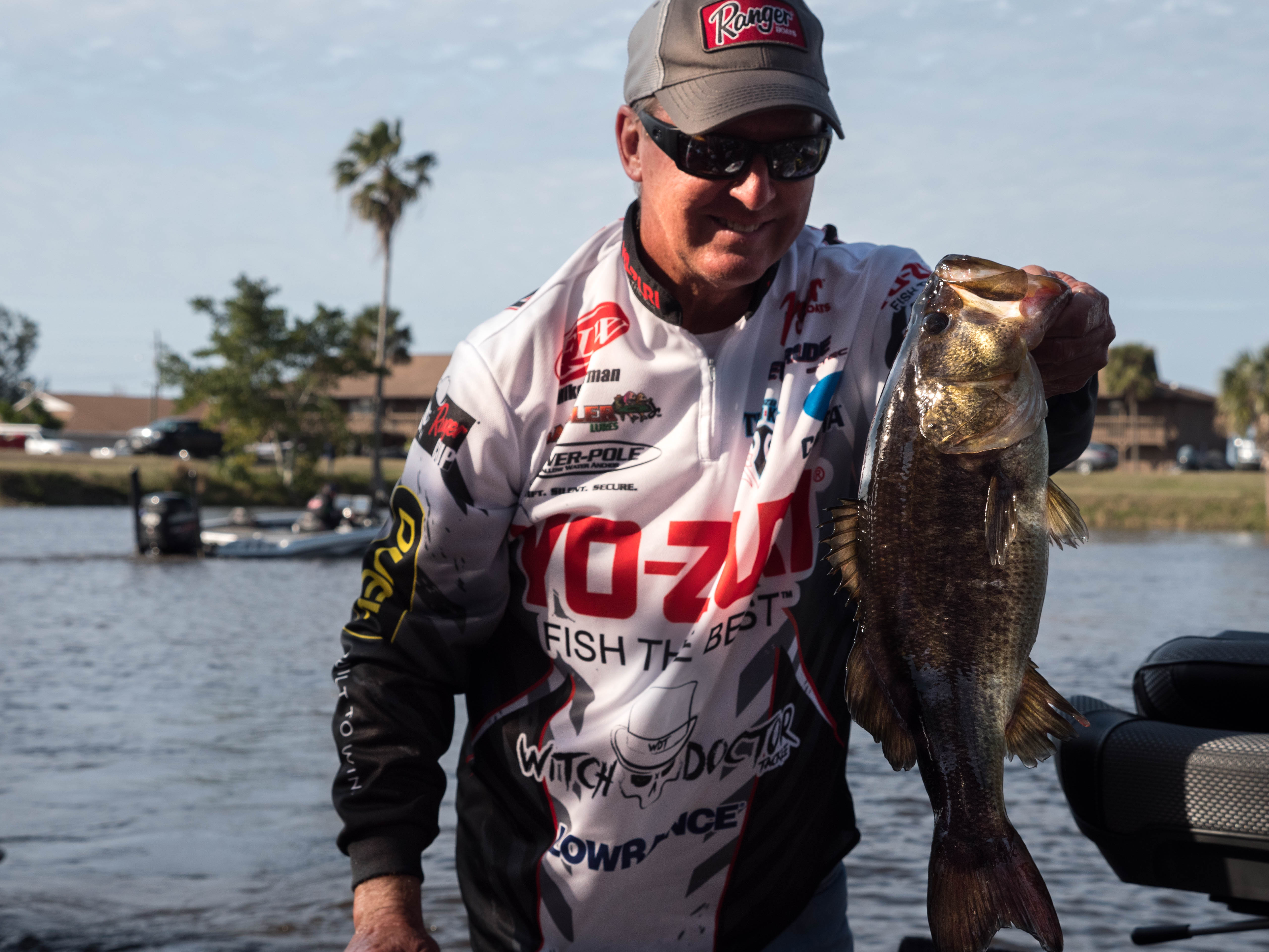 The older I get in this sport the more a good finish means to me. With the changing technology, industry curves, and constant new talent making their way into the tour level; the harder it is for me compete against fellow anglers. However this past weekend in my current home state of Florida at Lake Toho, Mickey Mouse must have given me a little magic being so close to Disney World because everything came together.
The older I get in this sport the more a good finish means to me. With the changing technology, industry curves, and constant new talent making their way into the tour level; the harder it is for me compete against fellow anglers. However this past weekend in my current home state of Florida at Lake Toho, Mickey Mouse must have given me a little magic being so close to Disney World because everything came together.
The fishing in Florida has been really off so far this year. Between the low water in all the lakes, the Red Tide issues the entire state faced last year, and it still being early in the year the best fishing is still yet to come. This last week I was really able to pinpoint a good amount of fish that were pre-spawning and spawning. I used my local knowledge of the lake to lock into Lake Kissimmee and fish staging areas leading into spawning areas with good, healthy grass around it. With water temperatures in the mid-60s I knew as the week processed the fish would continue to move up.
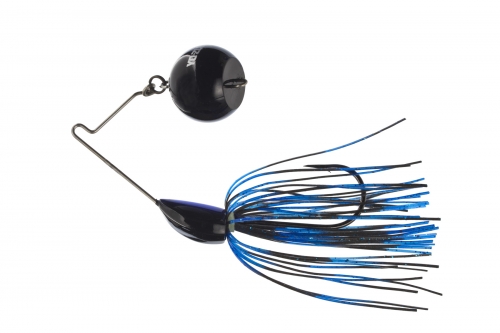
In practice I was really able to capitalize on a morning pattern and then an afternoon pattern, a key to my success knowing I could stay calm throughout the day and capitalize on the different patterns when they were at their best. In the mornings I was catching fishing on a 1/4oz Black and Blue 3DB Knucklebait with a soft plastic swimbait trailer. I was able to catch a couple really good fish on this and thought it would be a key bait for me throughout the tournament. I was throwing the Knucklebait over submerged grass around staging areas. As the afternoon took place and the sun got high I was able to pitch to hydrilla mats and dollar pads with a soft plastic stickworm catching spawning fish.
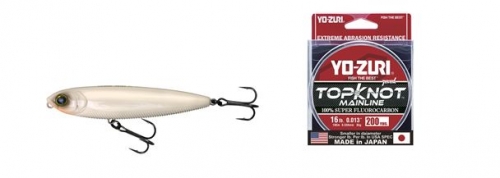
In the tournament, the morning Knucklebait bite had died but I was still able to capitalize catching these same fish using a 3DB Pencil in Bone color. For this technique I was throwing 20lb Yo-Zuri Hybrid line, and I was making short casts with it. I think the bait has better action when making shorter casts and not having so much stretch in the line. In the afternoons I was able to again capitalize again on the plastic stickworm bite. I was fishing the worm on a little [1/16oz] weight and throwing it on 16lb Yo-Zuri TopKnot Mainline Fluorocarbon.
One of the last factors that helped me was covering water in an area. I was fishing a massive area of Lake Kissimmee and it seemed like covering water and then breaking down an area once I got a bite was the key to capitalizing on water holding fish.
A Knotted Up Mess!!! (pt.1) –by Theron Asbery
Here is an on-going topic for debate in fishing; what knot to tie and when?
The number of knots out there to use and why they are better than the rest, is about as spread out as the number of different hardbaits on the market. For some anglers, they are very particular and picky about their knots. Some use a knot their grandpa taught them how to tie, and grandpa knew everything. Some use a particular knot that they used to win a tournament. Others use a certain knot because it has never broken on them. Finally, there is the anglers that tie any knot that the spirit moves them to tie; whatever the case may be, there is a lot of options.
I’ve spent ten years as a competitive bass angler, five of which have been competing on the FLW Tour. Here is my approach to the different knots out there and when to use them. The first piece of advice I can give every angler out there, keep it simple! I stick to three basic knots in my fishing arsenal and I have yet to find a reason to change. I’ve also added some value from Yo-Zuri prostaff members to help increase the incentive behind the way I like to do things.
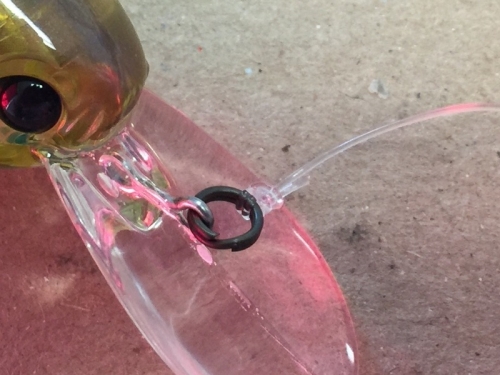
The first knot is the Palomar knot, probably one of the easiest but also one a lot of anglers have controversy over. Growing up in Oklahoma and fishing a lot with my dad, the Palomar knot was the first knot I learned to tie. However, I did break off a lot, but it was the only one I knew how to tie. It was not until I started competing in tournaments and reading a lot of article in magazines did I start learning how to tie different variations. The Palomar is still a knot I depend significantly on when fishing with Yo-Zuri Superbraid.
“The Palomar knot is as old as my fishing career. In Florida we fish a lot of grass, and I think the Palomar knot favors the best. Although it has a tendency to cut itself when tied with fluorocarbon, I think it holds the best strength with braid. Also it’s a smaller knot which cuts down the tendency on your bait getting hung up on debris in the water.” –Mike Surman, FLW Tour pro & Yo-Zuri prostaff member
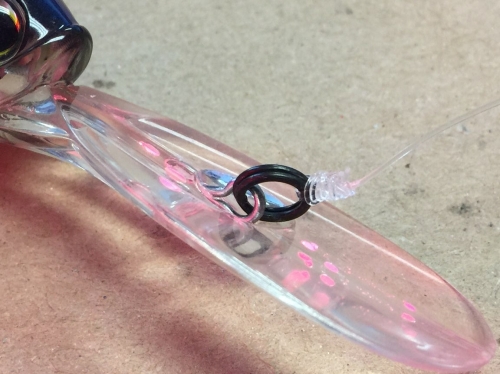
The knot I rely on 90% of the time is the San Diego Jam knot, or as some like to call it “the Jam knot”. This is the knot I especially tie when throwing Yo-Zuri crankbaits such as the 3DB Deep Crank or 3DR Mid Crank because both are worked especially well when in contact with wood or rocky bottoms. The amount of abuse you put your knot and line through in this scenario is endless, so a quality line and knot is paramount. Yo-Zuri TopKnot fluorocarbon is the best on the market and I’ve found the best knot to tie to hold up well and be the strongest is the San Diego Jam. It has three tag ends and pretty simple to tie, however the key to tying it correctly is like most any other knot, make sure to wet it down before you cinch it complete.
“Most of the anglers I know are tying the San Diego Jam for everything. I’ve never had that knot slip or break on me. In my line of work if it isn’t broke, then don’t fix it.” –Clent Davis, Yo-Zuri prostaff
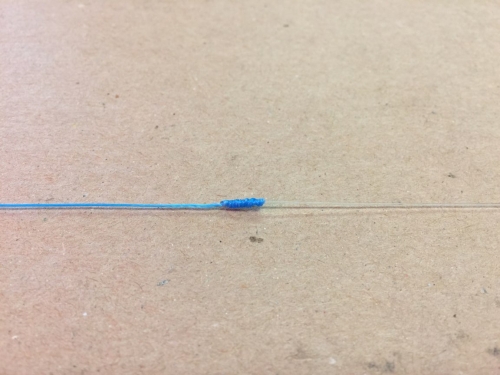
Finally, there is the knot everyone has to use to connect a mainline to a leader. Personally I like the Alberto knot. Again, this was the first knot I learned to tie when adjoining two different lines and it has not failed me yet. It is a pretty thin knot and holds up well for smaller diameter braid and fluorocarbon. It is a knot that wraps the mainline up to sixteen times around the leader material, so it has an excellent hold when all cinched down.
“I’ve found the quickest and strongest conjoining knot to tie, especially when finesse fishing, is the Alberto knot. I’ve caught ten pounders on shakey heads before, and never once had a single issue with the Alberto knot.” –Luke Clausen, Yo-Zuri prostaff & Major League Fishing BPT pro
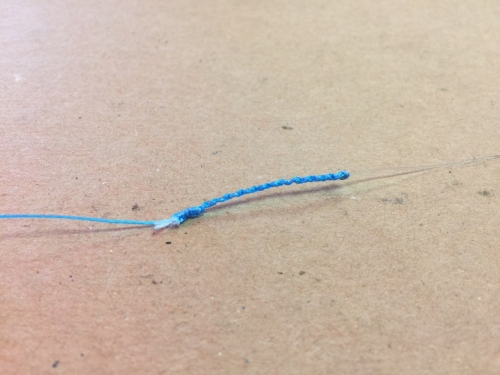
However, there is a new knot that has really shown itself and made a name for itself among anglers on the tour level; the FG knot. This is knot is relatively difficult to tie and will take a lot of practice to getting the hang of. It was originally designed by tarpon and redfish anglers in the state of Florida but has eventually made its way to the freshwater scene. Again, this is a very thin knot and has a great strength. I would recommend searching YouTube and seeing some different videos on how to tie it. It works very similar to a Chinese Finger Trap, I’ve even heard of guys using it for Crappie fishing and not having to retie for months and months at a time.
“The FG Knot is my favorite when tying braid to fluorocarbon. Although I recommend taking your time and sitting down in the bottom of the boat to tie it, I’ve exclusively started depending on it.”- Brandon Cobb, Yo-Zuri prostaff and BASS Elites Series Angler
Here is just a couple examples of the different knots out there anglers love to use. I have my personal favorites, and every angler out there has their own. No matter what an angler prefers to tie, the key is to have confidence in the knot you rely on!!!
Next week we will feature pt.2 which will cover knots preferred in saltwater fishing. Think it is the same as freshwater???
Staying warm and anticipating the upcoming Tournament Season!!!
Thanksgiving Dinner around my house is always a very busy time of year. The food, the family, football, hunting season, decorating, and then there is the day-to-day chores to keep up with. This is also a great time of the year for me to start thinking about the upcoming fishing season and keeping my body and mind in tune to being a competitor and chasing my dreams. While most anglers are breaking in their new boat for the upcoming year or just trying to escape cabin fever, there is still a good chance to catch a nice bucket mouth.
During the winter I usually try to keep things simple throwing jigs, swimbaits, and of course hard baits. There are usually three baits I always keep tied on the deck of my boat and match the colors according to water color and visibility outside. In clear water and sunnier days outside I prefer more translucent colors. On darker days and dirtier water I like more solid colors and always follow a shad pattern. The exception is sometimes I prefer crawfish colors depending on the structure I am targeting.

The Hardcore Flat Minnow, Yo-Zuri 3DB Shad, and 3DS Mid-Crank are my most trusted arsenal this time of year. I always try to fish areas that have a rock bottom or have close relating rip-rap around them; throw in some brush to the mix and you have pot of gold sitting in front of you. Generally the water temperatures are anywhere between 48-53 degrees here in the state of Alabama. When temperatures are this cold largemouth are usually not very aggressive but they have to eat to stay warm. My favorite bait is the 3DS Mid-Crank in a shad or crawfish pattern, I’ll always have the fish tell me what they want. This is a great bait when targeting fish in 4-8 feet of water. I generally throw this bait on 10lb Yo-Zuri TopKnot mainline fluorocarbon and use just a slow steady retrieve to the boat. The key here it to have the bait bumping the bottom since the fish usually are not high in the water column. On slick sunny days I have caught some of my biggest winter time bags on the 3DB shad. I love throwing this little bait because I can use light spinning tackle and catch everything from 12 inchers all the way to 6 pounders. Make sure your using a long fast action spinning rod with a high quality spinning reel that has a good drag system. For this technique I will use a 15lb Yo-Zuri SuperBraid with a 8lb Yo-Zuri TopKnot Mainline Fluorocarbon leader. The Hardcore Flat minnow is just tried and true bait any time the water is cold. It always catches a few more fish for me throughout the day because it resembles a dying bait fish and will be an easier meal for the fish.
When trying to locate good areas of the lake to fish try to keep in mind where the warmest water will be. Generally the areas with darker water color or middle sections of the lake with the deepest water are a safe bet. You will almost always find my boat up a river where the water is dirtier and warmer or fishing down the bank of rip rap in the middle sections of the lake where there is deep water relating.
Always trust in Yo-Zuri and happy fishing!!!
Fly Fishing in Alaska by Jonathan Lobaugh
This summer I went up to Alaska for some seasonal work and the fishing of course. I went up with all the essentials including Yo-Zuri top knot fluorocarbon leader line and used that as my tip-it. The methods I used to in corporate this great leader line is I would connect 4ft of my TopKnot leader to a poly leader. I used Both a fast sink and floating Polly leader, and my connection knot used was either a Uni-Uni or the classic loop knot. This allowed me to fish different species on the go I used 10lb, 12lb, and 15lb Clear TopKnot Leader it worked perfectly allowing me to land all my fish this summer. If you are a fly fisher man try this method and you definitely won’t regret the quality of Yo-Zuri TopKnot!
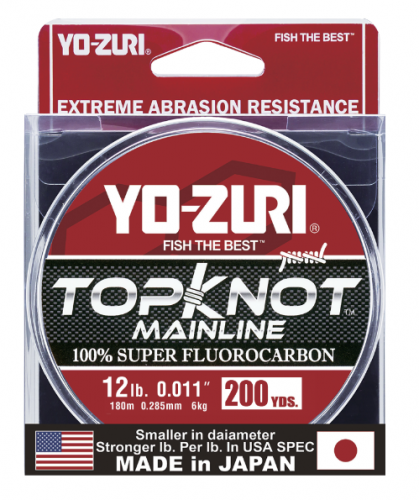
Also never forget the Yo-Zuri Pins Minnow for the days when casting a fly just does not work. Typically I like throwing the Pin’s minnow on light tackle with 6lb Yo-Zuri Hybrid. I’ve had great success throwing the 3 1/2″ model in Hot Pink Trout and Rainbow Trout.
